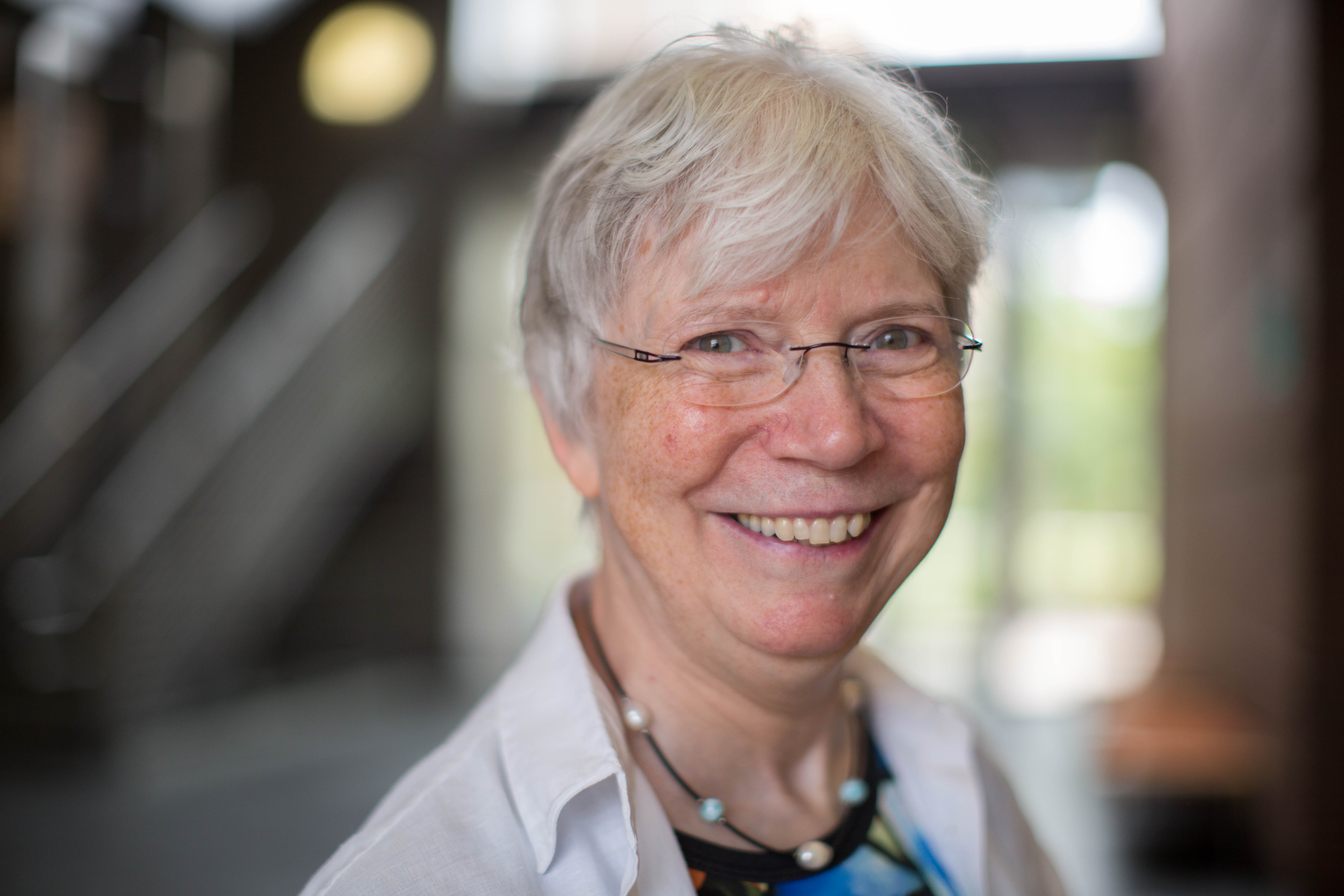For a career dedicated to research and teaching innovation, the highest honor

Natalie Foster named fellow of the American Chemical Society
Natalie Foster, who taught a generation of students to understand and embrace chemistry while conducting her own research into improving the detection of malignancies, has been named a 2014 fellow of The American Chemical Society (ACS), the world’s largest scientific society.
Her contributions to the field include a career spent studying the behavior of porphyrins, a family of compounds related to chlorophyll. Some derivatives of porphyrins are selectively taken up in tumors, making them candidates for improving the diagnosis of malignancy.
But her influence at Lehigh University extends beyond chemistry. A recipient of the Christian R. and Mary F. Lindback Foundation Award for distinguished teaching and now emeritus professor, Foster was inspired—and inspired others—to look for ways to improve the education process. At Lehigh, she was one of the first to embrace emerging technology and even popular culture to illuminate the complex, microscopic world of chemical interactions often taken for granted.
The 2014 Fellows will be recognized at the ACS Fellows Ceremony and Reception on Monday, August 11, 2014, during the Society’s 248th National Meeting & Exposition in San Francisco.
“The scientists selected as this year’s class of ACS fellows are truly a dedicated group,” said ACS President Tom Barton, Ph.D. “Their outstanding contributions to advancing chemistry through service to the Society are many. In their quest to improve people’s lives through the transforming power of chemistry, they are helping us to fulfill the vision of the American Chemical Society.”
Foster was always quick to use available technologies to enhance teaching. As a Faculty fellow in the LTS-based Lehigh Lab, Foster motivated other Lehigh faculty to incorporate technology. She was also a participant in Lehigh’s Clipper Project, an early foray into online learning at Lehigh that saw her turn an introductory chemistry lecture into a modular class using text, audio and video materials as well as embedded quizzes that could be used asynchronously over the web by students on or off campus.
At the graduate level, she taught classes in spectral analysis and conducted experiments using combinations of satellite TV, streaming video, web-mounted materials and podcasts to deliver graduate level education to on- and off-campus students.
Outside the classroom, Foster made chemistry accessible using popular culture. A 1997 Morning Call article, Lehigh U. Chemist Boldly Goes On Science-fiction Lecture Circuit, recounts how Foster used the television series “Star Trek” to spur interest in chemistry. A fan of the show, she used plotlines to examine scientific issues such as organ transplants, biodiversity, genetic engineering and viral epidemics by analyzing how they were portrayed in the series.
She went on to author a chapter on Star Trek for an ACS-published book.
Foster also dipped a toe into “Second Life,” the 3D virtual-reality world, exploring possible uses for virtual worlds to teach chemistry at the introductory level.
Foster is perhaps best known in the world of chemistry for collaborating with other authors to write Chemistry: An Atoms-Focused Approach and Chemistry: The Science in Context, two texts published by W. W. Norton and currently in use in colleges and universities nationwide. Her scientific articles have been published in Biochemistry, Journal of Radiopharmaceuticals, Biochemical and Biophysical Acta, Journal of Pharmaceutical Sciences, Journal of Magnetic Resonance, and Computers and Education.
The ACS Fellows Program was created by the ACS Board of Directors in December 2008 “to recognize members of ACS for outstanding achievements in and contributions to Science, the Profession and the Society.”
Additional information about the program, including a list of fellows named in earlier years, is available at www.acs.org/fellows.
The 2014 class of ACS Fellows, which includes 99 scientists, have demonstrated outstanding accomplishments in chemistry and made important contributions to ACS, the world’s largest scientific society.
Posted on:
Tuesday, August 19, 2014

